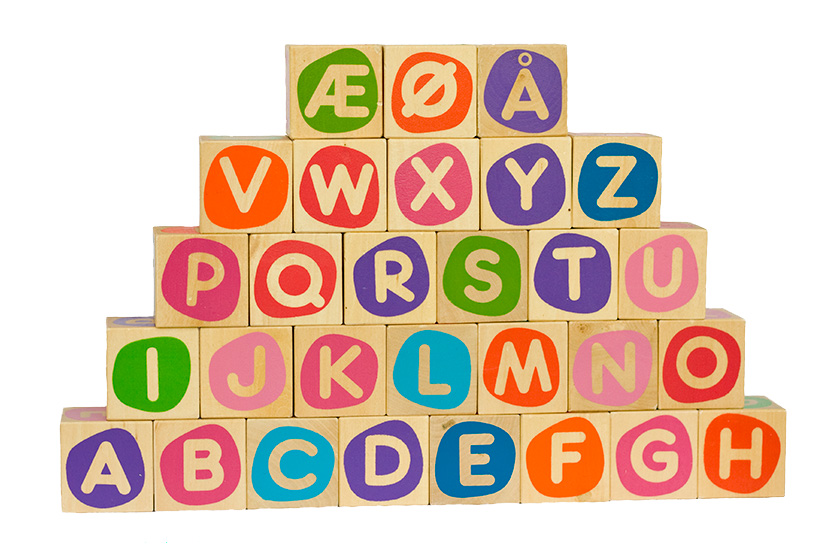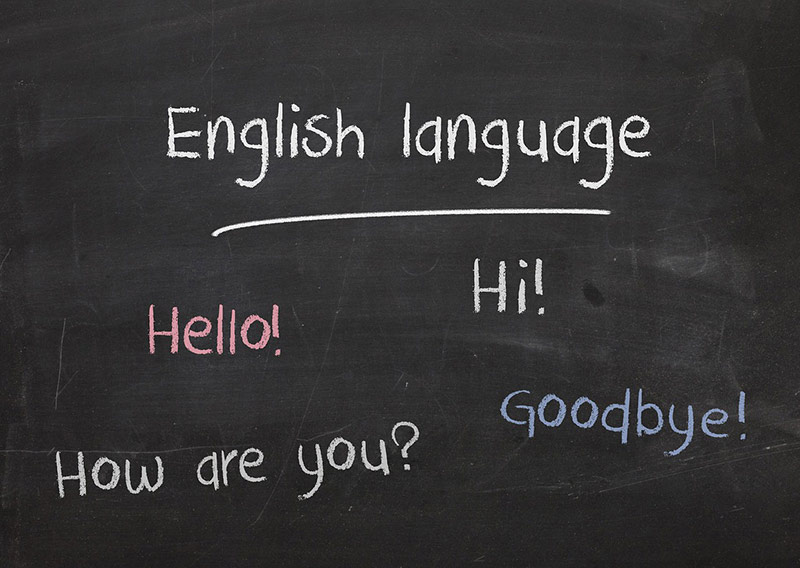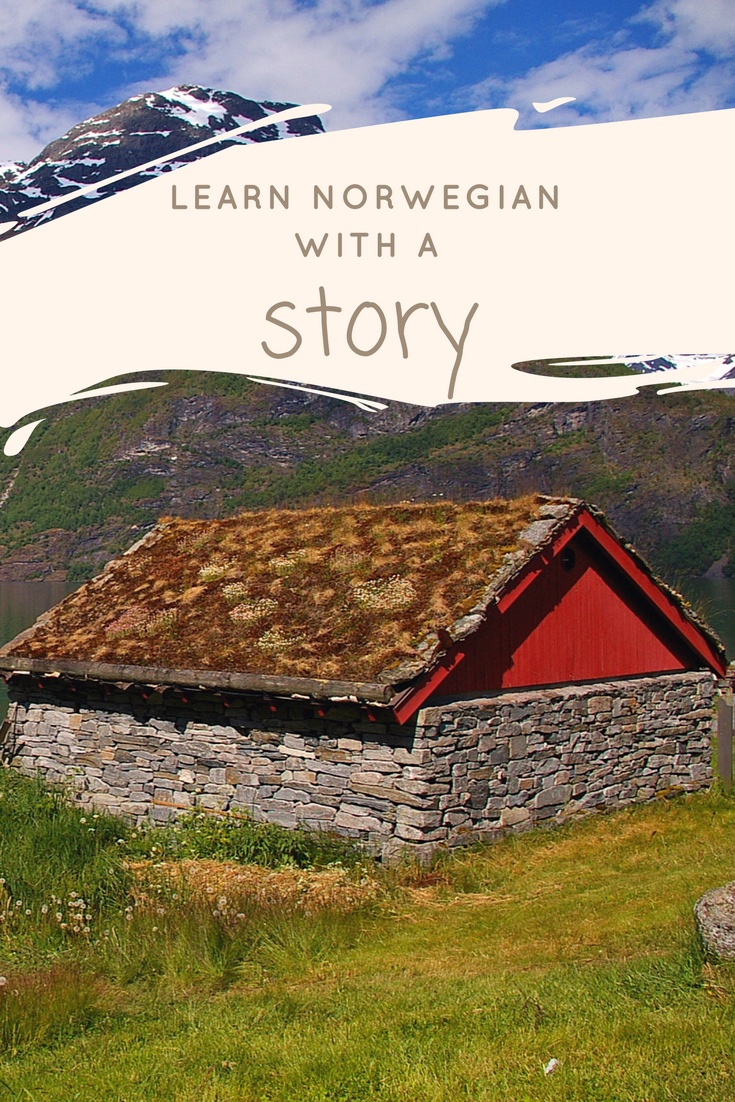Whether you're already in Norway or you're thinking about a move, your journey to learn Norwegian in 2024 starts here.
Are you ready to learn the Norwegian language? Modern tools and technologies have transformed language learning the world over, but the fundamentals still remain.

If you’re a native English speaker that has never learned another language before, getting to grips with Norwegian quickly can be a real challenge. That’s despite the apparent claims that Norwegian is one of the easiest languages to learn.
So, with that in mind, let’s get started. Here's our top tips for getting stuck into the language over the coming months.
Table of Contents
The languages of Norway
Before you begin your language learning experience, take some time to understand the different languages used in Norway.
There are minor languages such as Sami, but even what most people consider ‘Norwegian' can be broken down into two distinct written languages: bokmål and nynorsk.
Learn Norwegian Online: The Mystery of Nils / Norwegian Class 101
I won't get into the reasons why here, but just know that if you're struggling to understand a written article or see some spelling that you’re not expecting, this could be the explanation.
Most new students learn bokmål as it's the most commonly used variant, and is also used in most towns and cities. Nynorsk is more popular in more rural areas, particular along the west coast and in the fjord regions.
An introduction to Norwegian
Before you dive in, it's helpful to understand a little about how norsk (that's lesson one right there: How Norwegian is written in Norwegian!) has developed over the years in order to better understand how to approach your studies.

Norwegian is a North Germanic language, and one of the three Scandinavian languages that are more or less mutually intelligible. That's because they are direct descendants of the same family of Old Norse languages.
While sharing a similar history, Icelandic looks very different when printed on paper or written on the screen, yet when spoken the similarities to the Scandinavian language family become clear.
Norwegian is said to be one of the easiest languages in the world for a native English speaker to learn. The reason is that from a linguistic perspective, the languages share a huge amount: the way verbs work, word order (with the V2 rule being a major exception!), and a large amount of shared vocabulary.
On that point, Norwegian has a very small vocabulary. Compound words are commonplace, whereby two words are stitched together to make a new one.
Learn Norwegian Online: The Mystery of Nils / Norwegian Class 101
It's a common practice in English too (think week + day = weekday) but it's much more prevalent in Norway. Also, because of the high English proficiency, English loan words are easily and commonly absorbed into the language.
The Norwegian alphabet
One of the most important parts of the learning experience is the Norwegian alphabet. That's because while the language has so much in common with English, the alphabet throws up a few surprises.

There are 29 letters, of which three vowels – æ ø å – are not found in English. Also some of those remaining 26 letters are only included because they appear in loan words, generally from English.
Dialects of Norwegian
Norwegian has a rich variety of regional accents and dialects. Whether they realise it or not, most Norwegian learners will be learning to speak and hear the Oslo dialect, sometimes referred to as standard Norwegian, or eastern Norwegian.
That's fine if you'll be living in Oslo or are just learning for fun, but if you plan to live in Stavanger, Bergen, Trondheim, rural Norway, or the Arctic region, you must include some local language resources into the mix!
One of the more difficult dialects for beginners to get to grips with is Trøndersk, a group of dialects spoken in Trondheim and around central Norway. Wikipedia says it's mostly characterised “by the use of apocope, palatalisation and the use of retroflex flaps (thick L)”, but most ordinary people say it just sounds funny.
Check out some of our articles on dialects including Nordnorsk and the immigrant-influenced street language of Oslo, Kebabnorsk.
How to Learn Norwegian
There is no single best language learning technique, because all our brains work a little differently! What works for one person may not always work for another.
However, what will drastically increase your chances of achieving your goal is to combine several techniques. Here are a list of best practices that you should consider including in your plan.
Revise English

Yes, really. This is especially relevant if you haven't ever studied a foreign language, or haven't learned one for years. Understanding the structure of English makes it so much easier to take on board the unique aspects of other languages.
So if you don't know your past participles from your subject-verb agreements, take a moment to brush up on your native tongue. It will be time well spent!
Learn Norwegian Online: The Mystery of Nils / Norwegian Class 101
It's also a useful exercise for non-native speakers as you'll almost always need to learn Norwegian through English, no matter your native language.
Find a study partner
Learning on your own is inefficient. You may make great progress with reading comprehension, but you'll find your listening and speaking abilities will quickly fall behind.
We've found the best tactic for keeping your Norwegian skill levels up across the board, not to mention keeping yourself motivated, is to find a study partner. Thanks to the internet, this is easy to do even if you're not in Norway.

If you're lucky enough to speak a language other than English, you'll have no problem finding a Norwegian study partner who is desperate to practice their Spanish, German or Italian.
If English is your only language things may be trickier, but if you find a Norwegian student working at university level, you can always offer to proofread their English assignments in return for some conversational practice in Norwegian.
In most Norwegian towns and cities, you'll find language cafes. These are designed for new arrivals to practice speaking and listening in Norwegian, and are often run by Norwegians only too willing to help out a newcomer.
Look for groups on Facebook, Meetup.com, your local college/university, or seek out advertisements for a ‘språkkafé' at your local library or cafe.
If you live in a smaller town and can't find one, why not start your own?
Keep a language diary
Not only is a language diary a huge help when it comes to revising what you've learned, it's also a great motivational tool.

Having something you've produced yourself that documents your progress (beyond finished chapters in a book) can help to overcome that feeling that you're not making any progress.
There are a number of approaches to keeping such a diary. You can use it as a vocabulary builder, recording a new word or phrase every time you learn one. Or you can keep a journal, where you challenge yourself at the end of every day to write in Norwegian.
The advantage of keeping a journal is that it can help get you out of the present tense, which is a common roadblock for new language learners!
Simply ask yourself two questions: What did I do today? What am I going to do tomorrow? Even if you only manage a sentence or two, you'll be getting daily practice in both past tenses and future tenses.
Make a long-term commitment
Most of all remember that it's a marathon, not a sprint. Language learning is a ‘step' process.

You'll make little breakthroughs along the way, such as your first conversation in a coffee bar, the first time you complete a conversation with a Norwegian who doesn't feel the need to switch to English, the first time you understand a newspaper story, the first time you complete a phone conversation in Norwegian, and so on.
Celebrate these small achievements! The road to fluency is peppered with these small victories, and every step is a step closer to your ultimate goal.
That said, making these in-between steps can be tough going. It can often feel like you're making no progress until you achieve one of these breakthroughs, but in reality you're making progress every time you study.
Online courses & apps
Online courses are springing up to help beginners learn Norwegian. These are especially useful for people living outside Norway and/or find attending regular classes in-person difficult.
The two I've personally used in the past are the more traditional lessons of Norwegian Class 101 and the story-based approach of The Mystery of Nils. Studying online can also be a great accompaniment to in-person classes, which brings me on to…

Apps such as Duolingo and Memrise are a great way to reinforce what you've learned in the online courses, every single day. Both apps are free and offer paid versions with more features, but we've found the free apps to be really useful.
Vary your approach
Don't just rely on one book or one course. The best way to learn any language is to absorb as much material as you can in as many forms as possible. Remember that a language isn't just about reading!
Think back to your early years at school. Remember all those colourful paintings you made and rhymes and songs you learned? There was a good reason for that!
Norwegian TV, YouTubers, NRK podcasts, online newspapers, apps, and films are all great ways to mix up your language learning. If you're starting out, try the Klar Tale online newspaper and podcast, written and spoken in simple Norwegian.
Visit Norway!
If you're not already living in Norway, visiting the country is a great way to put the theory into practice.
We've heard from many people who've learned Norwegian from books in the USA only to have come to Norway and not understood a word. There's many reasons why, from dialects to differing vocabulary, or simply not being prepared for unexpected responses.

Start planning your trip using our Norway travel guides and give yourself a hard deadline for your language learning journey!
Phrases and idioms
Speaking of sounding funny, getting a handle on phrases and idioms is one of the key steps to fluency, once you've mastered the basics.
Learn Norwegian Now: Norwegian Class 101 / The Mystery of Nils
Popular sayings in Norwegian
Why are these so important? Well, imagine for a moment you are learning English.
If someone says to you “beat around the bush” or “sticking to your guns”, you have no chance off grasping the meaning of the phrase even though you understand all the component words!
It's exactly the same in Norway, and many such phrases play a key role in understanding Norwegian culture. Read more about funny expressions and idioms in Norwegian and also some common Norwegian phrases.
There's no such thing as bad weather, only bad clothes
Of all the Norwegian phrases out there, this one you'll encounter first. If you're (un)lucky enough to be sat next to a native on your inbound flight who is eyeing your outfit with bemusement, you're guaranteed to hear it.
The phrase in Norwegian: “det finnes ikke dårlig vær, bare dårlige klær” actually rhymes and is a nice introduction to the “up and down” nature of the accent! Read more.
We are born with skis on our feet
We are yet to find a Norwegian that cannot ski, which of course is the foundation for this jolly phrase. It is given – usually in English – by Norwegians to foreigners learning to ski with great glee. Read more.
Hja!
This is an fascinating one because it's neither a word nor an expression. It's merely a sound. Once you start doing it yourself without realising it, you know you've turned native. Read more.
Numbers, counting and time
Learning to count to ten can be one of the most satisfying ways to start with the language, simply because Norwegian numbers are relatively easy to learn for a native English speaker.
Many sound quite similar to their English equivalents. The ones that are different teach you some important lessons about pronunciation early in your journey.
Finally, it's good to study how to tell the time in Norwegian early. Otherwise, it could easily trip you up!
Swearing in Norwegian
Regardless of whether you personally curse or not, it's a good idea to learn Norwegian swear words. After all, wouldn't you like to know what's being said to you?




Love your posts! Just a few tips from me. I was an exchange student in 1994 in Lillstrøm. In 3 months my norsk was fluent in a conversation. I had a pocket dictionary and wrote things down. If not once or twice , 10-20-30 times. My norsk is as good today or better than when I left and I put it down to this and the fact no one spoke English to me except the other exchange students. Yes technology is great and I use it now but nothing beats muscle memory !! Lykke til!
Great tip! Tuen takk!
Thank you for such a wonderful language tips, tried a lot, watched you tube videos, took online courses from different link, helped alot but the problem is I understand more than I speak😊😊love Norway and Norwegian friends.
“Understanding the structure of English makes it so much easier to take on board how a new language differs. So if you don’t know your past participles and subject-verb agreements, take a moment to brush up on your native tongue”
It’s been a very long time since English lessons in high school. I’ve forgotten everything about past participles (what are those?) and such, but I inherently speak fairy proper English. Can you suggest a short online course to re-learn all of this?
So true about ‘learning’ English again! Whenever I’m frustrated with something in Norwegian, taking a look at the ridiculous things we do with the English language can really help me get some perspective. And when I struggle to understand different dialects, I imagine a Norwegian coming to the UK for the first time and being faced with Scouse, Geordie, Glaswegian and Brummie accents… must be a nightmare!
Sir is it possible to study Norwegian language in Norway as a full time course
Need to speak Norwegian . Please can you assist me in my goal. Susan Everson
So exited to learn Norwegian! I will pass LOTS of notes to my friend (who is also learning) in class.
I live in Norway for about 5 years now. It is the most expensive country to live. I would not recommend coming here unless you have job already. Job market is nonexisting.
“It’s also a useful exercise for non-native speakers as you’ll almost always need to learn Norwegian through English, no matter your native language.”
That comment reminded me of an incident when I visited Norway in 2005. I was standing by the Telemark Canal in the village of Dalen when an elderly man started talking to me in Norsk. I told him that I was English and didn’t understand.
He replied that he knew England very well from his time spent there in the 1930s! He said he was training for missionary work in India at the time and needed to learn Hindi, but there was no way to go to Hindi directly from Norsk, so he had to learn English first. He moved to England for a while as it would be the quickest way for him to learn English, followed in due course by Hindi.
Hallo!!!
Do you know of any resources for learning the Bergen dialect?
Tusen takk!
Moving to Bergen or hiring a tutor from Bergen.
My Norsk is not the great, I have no study partner and I’m in a predominantly English speaking town. I wish it wasn’t so.